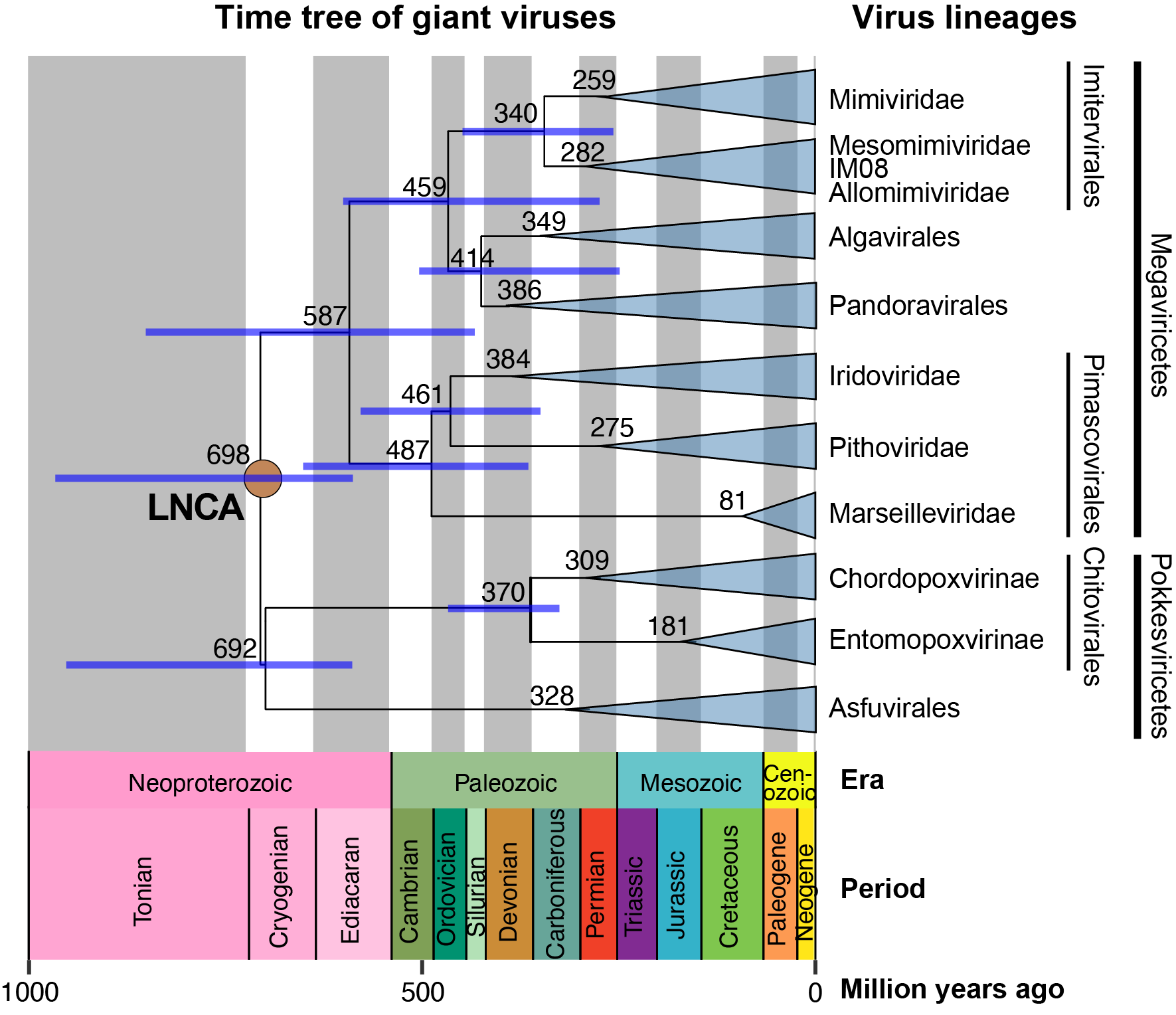[Chuan Ku] Time tree of giant viruses
POST:Viruses pose major threats to human health and food security, and they are key regulators of organism abundance in the environment. However, we know little about how long different viruses have been around on Earth and generally lack the knowledge of their origins and ancient evolution. Unlike animals and plants, where fossil ages can be used as calibration points in molecular dating analyses, a major limiting factor for estimating viral divergence times is the absence of fossil records. Here, we developed a host-calibrated dating method for viruses and inferred the evolutionary timescale of giant viruses (i.e., the whole phylum of Nucleocytoviricota), which have large genomes and infect various eukaryotes (vertebrate and invertebrate animals, fungi, algae, amoebae, flagellates, and many others). The evolutionary time tree of this entire phylum provides the estimated times of virus lineage origins, such as two major transitions from amoebozoan hosts to animal hosts that eventually led to the emergence of iridoviruses and African swine fever viruses, respectively. Consistent with the high demand of giant virus replication for energy generated by mitochondria, the last Nucleocytoviricota common ancestor dates back to an era with significantly higher oxygen levels on Earth than before. Although giant viruses are much younger than eukaryotes, they spread across all major lineages of eukaryotes through extensive host shifts within the last hundreds of millions of years and have become one of the virus groups with the widest host range.
We thank the Bioinformatics Core Lab of the Institute of Plant and Microbial Biology and the National Center for High-performance Computing (NCHC) of National Applied Research Laboratories (NARLabs) of Taiwan for providing computational and storage resources. This work was supported by the Academia Sinica Career Development Award grant AS-CDA-110-L01 and the National Science and Technology Council, Taiwan grant 111-2611-M-001-008-MY3.

A time tree of giant viruses (Nucleocytoviricota) shows the divergence times of viral lineages in the last billion years. LNCA: last Nucleocytoviricota common ancestor. Nodal bars: 95% highest confidence interval of age estimates.